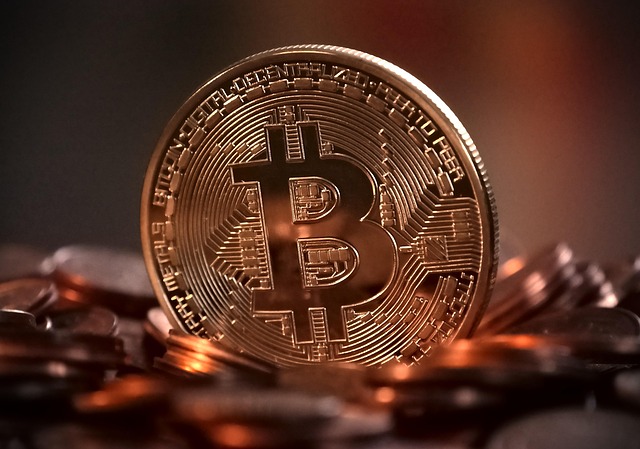Trump memecoin team denies $300K dinner requirement rumors
US President Donald Trump’s memecoin team denied social media rumors that holders of the Official Trump (TRUMP) token need at least $300,000 to participate in an upcoming dinner with the president. On April 25, the official X account of the Trump memecoin clarified that there is no $300,000 requirement to join the memecoin project’s dinner event featuring the US president. The rumor stemmed from community members citing the Solana blockchain explorer showing holders on the token’s contract address. At the time of writing, the explorer shows that the 220th-largest holder has 33,114 TRUMP, worth more than $400,000. However, the memecoin team said the explorer doesn’t reflect their criteria. “People have been incorrectly quoting #220 on the block explorer as the cutoff. That’s wrong because it includes things like locked tokens, exchanges, market makers, and those who are not participating. Instead, you should only be going off the leaderboard,” they wrote. Leaderboard for Trump Coin holders. Source: Trump CoinRelated: SEC task force met with Trump-supporting firms to discuss crypto regulationTrump to hold dinner for top 220 memecoin holdersOn April 23, the Trump Coin team revealed the leaderboard, showing the wallet addresses of those who are in the lead to qualify for the dinner event. The final guest list is still not finalized, but the memecoin team said any tokenholder who wants to be eligible must go through a background check. In addition, their wallet will also go through Know Your Customer and compliance measures. According to the memecoin’s official site, the team will pick the winners based on time-weighted holdings. This calculates the amount held and the time the tokens were held. “The longer you hold, the higher your weighted score becomes,” the team wrote. At the time of writing, the top holder in the leaderboard holds over 1.1 million tokens, worth $14.6 million, but only has a time-weighted score of over 686,000. The 220th wallet holder has 1,125 TRUMP, valued at almost $15,000, and a score of 136. The leaderboard also shows that some addresses with zero current TRUMP holdings remain eligible for the dinner. This is likely due to how long they previously held their tokens. Magazine: Pokémon on Sui rumors, Polymarket bets on Filipino Pope: Asia Express
Sam Bankman-Fried moved to a low-security prison — so what?
Sam “SBF” Bankman-Fried, the disgraced co-founder of collapsed cryptocurrency exchange FTX, to a low-security US federal correctional institutionBankman-Fried was moved to the low-security Terminal Island federal correctional institution. Previously, he was located at the Victorville medium-security facility, a notoriously violent place, according to prison consultant firm Elizabeth Franklin-Best.Samuel Goldfaden, a partner at the crypto-centric lawfirm, DLT Law told Cointelegraph that while his previous facility was violent, BankmanFried had been held in a safer part of the facility, adding:“Sam Bankman-Fried spent most of his detention in the more secure dorm units of MDC Brooklyn, reportedly alongside other high-profile inmates such as Sean P. Diddy to ensure his safety.“Terminal Island FCI review. Source: Elizabeth Franklin-BestIn “good” companyTerminal Island is located in San Pedro, California and houses involved in financial crime. According to Franklin, notable inmates at the facility include ormer stockbroker Anthony Elgindy (wire fraud, racketeering, securities fraud and extortion) and internet music entrepreneur Mouli Cohen (wire fraud, money laundering and tax evasionNew York ttorney Aaron Brogan told Cointelegraph that Bankman-Fried’s “non-violent record may well have been incorporated into a risk score” which led him to this low-security facility. His alleged autism, on the other hand, was unlikely to have had an influence despite layers playing it as a card:“I’ve heard reports that describe Sam as autistic, but that is within a particular subclinical contemporary lens — autism can be a debilitating condition, but Sam graduated from MIT, founded multiple billion-dollar companies, and successfully defrauded millions of people.“Goldfaden suggested a tie between Bankman-Fried’s interview with political commentator Tucker Carlson, which was not approved by prison authorities and followed by solitary confinement. He highlighted that shortly after the interview,“was transferred, to improved conditions and moved closer to his family.A win for the FTX co-founderBrogan pointed out that lower security facilities are usually “nicer” and said that as a result he is less likely to become a victim of violent crime. will probably have a “slightly easier” time communicating with his attorneys.Still, Brogan said that those are suppositions that are likely to be true, but not guaranteed and the change may be negative for Bankman-Fried instead:“It is hard to say from the outside, but generally one would expect lower security prisons to make such communication less challenging.“The timeline of the FTX co-founder’s appeal will not be affected by the move, his pardon-seeking. The move also raises questions about the markedly different safety and rehabilitation environments that inmates guilty of non-violent offences find themselves in.Still, Brogan said that is “the nature of the United States prison system.” He highlighted that “the prison system treats all inmates unfairly, and almost nobody cares.” He :“This is a punishment and the mass of people want it to be hard. There is some threshold of human decency, but nothing that has happened to Sam approaches that.“
Polygon CEO: DeFi must ditch hype for sustainable liquidity
Polygon Labs CEO Marc Boiron called for a fundamental shift in how decentralized finance (DeFi) protocols manage liquidity, labeling the sector’s ongoing liquidity crisis as “self-inflicted.” In an exclusive interview, Boiron outlined Polygon’s vision for sustainable DeFi, emphasizing chain-owned liquidity and transparent economic models as the path forward.Boiron criticized DeFi protocols for fueling a cycle of “mercenary capital” by offering sky-high annual percentage yields (APYs) through token emissions. “It’s just renting liquidity; it’s not real loyalty,” he told Cointelegraph, noting that such strategies lead to fleeting liquidity that vanishes when yields drop or token prices falter. This reliance on short-term hype, he argued, undermines the sector’s stability and deters institutional adoption.Chasing DeFi stability over hypeTo break that cycle, Boiron urged protocols to prioritize fundamentals over flashy returns. “Sustainable DeFi needs models where liquidity sticks around for the right reasons,” he said, pointing to Polygon’s POL token as a blueprint for achieving this.“Protocols can put their treasury to work, earning yield instead of diluting token value. Over time, this strengthens the treasury rather than just paying off temporary liquidity providers.”Polygon’s approach centers on chain-owned liquidity, where protocols build treasuries to directly own liquidity positions rather than relying on external providers. Unlike token emissions, which Boiron said attract liquidity quickly but dilute token value, owned liquidity offers long-term stability and capital efficiency.The only trade-off in the plan, according to Boiron, is time. He explained that building a treasury through captured fees, bond mechanisms or limited emissions requires patience and disciplined management.Polygon prepares to onboard traditional finance in cryptoFor traditional finance (TradFi), liquidity stability and predictability are prerequisites for full DeFi adoption:“Traditional finance runs on models that need stable, reliable market access. If a DeFi protocol suddenly loses liquidity or slippage spikes, it creates a level of risk most institutions just won’t take.”However, Boiron said that Polygon’s solutions — sustainable treasury management, owned liquidity and transparent models — are not just for institutions. “These are good financial fundamentals that work for any protocol,” he said, dismissing suggestions that Polygon’s strategy is too narrow to address DeFi’s broader issues.Related: Yemenis are turning to DeFi as US sanctions target Houthi groupBuilding a scalable blueprint for chain-owned liquidityAs Polygon pushes for a DeFi reset, Boiron remains optimistic about getting support from frameworks like Europe’s Markets in Crypto-Assets Regulation and evolving US guidance. “We’re 12–18 months away from seeing a lot more institutional involvement,” he predicted.Looking to 2026, Boiron envisions a more stable DeFi ecosystem with less volatility, stronger community governance and sophisticated financial products bridging TradFi and real-world assets. He said Polygon (POL) could reduce reliance on mercenary capital, fostering true decentralization.He added that POL is the foundation for long-term growth, as it helps protocols focus on building better products and keeping users engaged, instead of plugging liquidity gaps or diluting tokens to stay afloat:“POL doesn’t solve everything on its own, but it gives protocols the breathing room to tackle bigger challenges like user retention and capital inflows the right way.”Boiron’s core message to DeFi protocols is clear: “Sustainable economics always win in the long run.” While market pressures make it tempting to chase high APYs, he noted that surviving protocols from past cycles prove the value of sustainability. “More teams are starting to get it,” he said, urging the ecosystem to adopt models that prioritize long-term growth over fleeting buzz.Magazine: Ethereum is destroying the competition in the $16.1T TradFi tokenization race
SEC bids to drop securities suit against Dragonchain over crypto ICO
The US Securities and Exchange Commission is looking to drop its unregistered securities lawsuit against blockchain firm Dragonchain in the agency’s latest crypto-related backdown. In a joint stipulation filed with Dragonchain on April 24 in a Seattle federal court, the SEC said it “believes the dismissal of this case is appropriate,” citing the work of the agency’s Crypto Task Force in helping “develop the regulatory framework for crypto assets.”“The Commission and the Defendants stipulate that this Litigation be dismissed with prejudice […] and without costs or fees to either party,” the filing reads.The SEC sued Dragonchain, Inc.; its backer, the Dragonchain Foundation; The Dragon Company; and Dragonchain’s founder, Joseph Roets, in August 2024, claiming they raised $16.5 million through a crypto token that was an unregistered securities offering.According to the SEC, the Dragonchain (DRGN) tokens raised $14 million in an August 2017 presale and an initial coin offering (ICO) that ran in October and November of that year. At the time, it said the company needed to register as the tokens were investment contracts under securities laws. The SEC said a further $2.5 million worth of DRGN was sold between 2019 and 2022, which it alleged was used to cover business expenses and develop the firm’s tech. The suit was stayed in October after Dragonchain made a settlement offer to the SEC, which was extended in January after the agency said the case should remain paused due to US President Donald Trump’s sweeping executive order earlier that month calling for the country’s “leadership in digital assets.”Meanwhile, the DRGN token has jumped 95% over the past day to over 8.5 cents on news of the SEC’s planned dismissal, but it’s still down around 98.5% from its $5.46 peak in January 2018, according to CoinGecko.Dragonchain’s token jumped after the SEC filed to dismiss its lawsuit. Source: CoinGeckoSEC backs off crypto under TrumpIt’s the latest case involving crypto that the SEC has abandoned under the Trump administration.The SEC spun up a Crypto Task Force in January, the day after Trump re-entered the White House, to lead the regulator’s engagement with the crypto industry.Related: SEC task force met with Trump-supporting firms to discuss crypto regulation An agency memo shows its task force met with Dragonchain representatives on March 24 to discuss how the SEC should approach handling crypto.The SEC has also dismissed some of its most high-profile lawsuits against crypto firms, including its actions against Coinbase, Ripple and Kraken.It’s also dropped investigations into other crypto firms, including OpenSea, Crypto.com and Immutable, with no further action planned.Magazine: SEC’s U-turn on crypto leaves key questions unanswered
Italian town to unveil locally financed Satoshi Nakamoto monument
The Italian municipality of Fornelli in the Molise region of Italy will be dedicating a monument to pseudonymous Bitcoin (BTC) creator Satoshi Nakamoto.In an April 23 Facebook post from the municipality, Fornelli said it plans to unveil the Satoshi artwork on May 1. Details surrounding the monument were unclear in the announcement, but the municipality said it had been designed by artist Mattia Pannoni and financed by the local government. “It is important, indeed fundamental, as an administration, to take into consideration all the new ideas that come from our young people,” said Fornelli Mayor Giovanni Tedeschi.According to the local government, Fornelli has the “highest density of Bitcoin adoption in the world” among its roughly 1,800 residents. Other regions have attempted to use BTC or other cryptocurrencies to attract visitors, including the Bitcoin Beach area of El Salvador and the Swiss city of Zug, which accepts crypto payments for many local goods and services. Portraying a faceless individual through artThe identity of Satoshi, whether a single individual or a group of people, remains one of the biggest mysteries in the crypto space since the publication of the Bitcoin white paper in 2008. Related: Italy finance minister warns US stablecoins pose bigger threat than tariffsMany artists, both crypto investors and otherwise, have released artwork attempting to represent the pseudonymous creator through statues and digital images. A common theme in these pieces is showing Satoshi without any clearly defined facial features, sometimes wearing a hoodie or working on a computer. According to the announcement, the monument will be unveiled in the Piazza Umberto I area of Fornelli on May 1.Magazine: Former Love Island star’s tips on how to go viral in crypto: Van00sa, X Hall of Flame
Crypto startups no longer welcome in Nvidia’s accelerator program
Nvidia’s accelerator program appears to sidestep digital assets startups, with its help section listing crypto-focused companies as ineligible to join the tech giant’s global network of founders.According to the program website, crypto companies and four other types of businesses are excluded from participating in Nvidia’s Inception: consulting and outsourced development firms, cloud service providers, resellers and distributors, and companies that are already public.Nvidia’s Inception membership criteria. Source: NvidiaThe move indicates a shift in Nvidia’s policy regarding crypto startups in its accelerator program. For instance, in 2018, the company accepted Ubex — a startup combining blockchain and AI for digital advertising — in its Inception program. A Nvidia spokesperson declined to comment on the eligibility policy. The Inception Program is designed for companies younger than 10 years in all stages of funding.Nvidia is best known for its semiconductors, which play a crucial role in powering microchips for data centers. That same processing power has also made Nvidia’s hardware popular among crypto miners, with the company having previously explored crypto-related use cases for its products.Related: Public mining firms sold over 40% of their BTC in March — ReportNvidia and the US-China AI raceNvidia is one of the most valuable companies in the world in terms of market capitalization and a key player in the global artificial intelligence race. The company introduced its H20 chip in 2024, designed to comply with US export restrictions imposed during the Biden administration aimed at limiting China’s access to advanced AI hardware. Despite being less powerful than Nvidia’s top-tier chips, the H20 chips could still enable significant AI advancements in China. In response, the Trump administration imposed stricter export controls to require special licenses for H20 exports to China — a move that could impact Nvidia’s sales. According to the BBC, China accounted for 13% of Nvidia’s sales in 2024. The company anticipates a $5.5 billion revenue hit tied to US export restrictions.Related: The next frontier for crypto will be decentralizing AI
Bitcoin rebounds as bulls eye $100K and bears scramble to cover short positions
Key takeaways: Bearish Bitcoin traders were caught off guard by BTC’s rally above $90,000.Spot volumes are driving the Bitcoin price rally.Derivatives positions with a bearish bias remain at risk of liquidation.Bitcoin (BTC) held above the $93,000 mark on April 24, suggesting a potential conclusion to the 52-day bear market that bottomed at $74,400. Although Bitcoin is beginning to show signs of decoupling from the stock market, professional traders have not altered their strategies, as indicated by BTC futures and margin market data.BTC top traders’ long-to-short ratio. Source: CoinGlassA higher long-to-short ratio reflects a preference for long (buy) positions, while a lower ratio indicates a tilt toward short (sell) contracts. Currently, the top traders’ long-to-short ratio on Binance stands at 1.5x, a notable decrease from the 2x level observed ten days earlier. At OKX, the ratio peaked near 1.1x on April 17 but has since lost momentum and now sits at 0.9x.Bitcoin shines as dollar weakens and S&P 500 targets are slashedBitcoin’s 10% rally between April 20 and April 24 coincided with a more conciliatory stance from US President Donald Trump regarding import tariffs and his criticism of Federal Reserve Chair Jerome Powell, who has faced scrutiny for maintaining high interest rates. On April 24, Trump stated he had “no intention” of firing Powell, marking a notable shift from his previous rhetoric.Amid economic uncertainty, Deutsche Bank strategists have reduced their year-end S&P 500 target by 12% to 6,150. Meanwhile, the US dollar has weakened against other major currencies, pushing the DXY index below 99 for the first time in three years. Despite a modest 6% gain over the past 30 days, Bitcoin’s performance has secured it a place among the world’s top eight tradable assets, with a market capitalization of $1.84 trillion.The sharp move above $90,000 caught Bitcoin bears off guard, resulting in over $390 million in leveraged short (sell) futures liquidations between April 21 and April 22. More significantly, aggregate open interest in BTC futures remains just 5% below its all-time high, indicating that bearish traders have not fully exited their positions.BTC futures liquidation heatmap, USD. Source: CoinGlassIf Bitcoin’s price maintains its upward momentum and breaks above $95,000, an additional $700 million in short (sell) futures positions could be liquidated, according to CoinGlass data. This potential short squeeze may prove especially challenging for bears, given the robust inflows into spot Bitcoin exchange-traded funds (ETFs), which totaled over $2.2 billion between April 21 and April 23.A newly announced joint venture involving SoftBank, Cantor Fitzgerald, and Tether aims to accumulate Bitcoin through convertible bonds and equity financing, which could further strengthen the bullish case. Named “Twenty One Capital,” the Bitcoin treasury company is led by Strike founder Jack Mallers and plans to launch with 42,000 BTC.Related: Sovereign wealth funds piling into BTC as retail exits — Coinbase execThe muted response from top traders in BTC margin and futures markets suggests that the recent buying pressure has originated mainly from spot markets, which is generally considered a positive indicator for a sustainable bull run.The longer Bitcoin consolidates above $90,000, the greater the pressure on bears to cover their shorts, as this level reinforces the narrative that Bitcoin is decoupling from the stock market. This could provide the confidence needed to challenge the $100,000 psychological threshold.This article is for general information purposes and is not intended to be and should not be taken as legal or investment advice. The views, thoughts, and opinions expressed here are the author’s alone and do not necessarily reflect or represent the views and opinions of Cointelegraph.
The hidden risk of updatable firmware
Opinion by: Igor Zemtsov, chief technology officer at TBCCCrypto security is a ticking time bomb. Updatable firmware might just be the match that lights the fuse.Hardware wallets have become the holy grail of self-custody, the ultimate safeguard against hackers, scammers and even government overreach. There’s an inconvenient truth, however, that most people ignore: Firmware updates aren’t just security patches. They’re potential backdoors, waiting for someone — whether a hacker, a rogue developer or a shady third party — to kick them wide open.Every time a hardware wallet manufacturer pushes an update, users are forced to make a choice. Hit that update button and hope for the best, or refuse to update and risk using outdated software with unknown vulnerabilities. Either way, it’s a gamble. In crypto, a bad gamble can mean waking up to an empty wallet.Firmware updates aren’t always your friendUpdating firmware sounds like common sense. More security! Fewer bugs! Better user experience!Here’s the thing: Every update is also an opportunity not just for the wallet provider but for anyone with the power, or motivation, to tamper with the process.Hackers dream of firmware vulnerabilities. A rushed or poorly audited update can introduce tiny, almost imperceptible flaws — ones that sit in the background, waiting for the right moment to drain funds. And the best part? Users will never know what hit them.Then there’s the more unsettling possibility: deliberate backdoors.Recent: Hardware wallet Ledger helps competitor Trezor resolve security vulnerabilityTech companies have been forced to include government-mandated surveillance tools before. What makes anyone think hardware wallet makers are exempt? If a regulatory agency — or worse, a criminal organization — wants access to private keys, firmware updates are the perfect attack vector. One hidden function. One disguised line of code. That’s all it takes. Still think firmware updates are harmless? Firmware vulnerabilities are already being exploitedThis isn’t some far-fetched, doomsday scenario. It has already happened.Ledger, one of the biggest names in crypto security, had a major security crisis in 2018 when security researcher Saleem Rashid exposed a vulnerability that allowed attackers to replace Ledger Nano S firmware and hijack private keys. Nearly 1 million devices were at risk before a fix was rolled out. The scary part? There was no way for users to know if their devices had already been compromised.In 2023, OneKey suffered a similar nightmare. White hat hackers demonstrated that its firmware could be cracked in mere seconds. No crypto was lost — this time. But what if real attackers had found the flaw first?Then came the “Dark Skippy” exploit, taking firmware-based attacks to an entirely new level. With just two signed transactions, hackers could extract a user’s entire seed phrase — without setting off a single alarm. If firmware updates can be manipulated this easily, how can anyone be sure their assets are safe?The hidden price of updatable firmwareTo be fair, not all firmware updates are security disasters. Ledger uses a proprietary operating system and secure element chips for added protection now. Trezor takes an open-source approach, allowing the community to scrutinize its firmware. Coldcard and BitBox02 give users manual control over updates, reducing — but not eliminating — risk.Here’s the real question: Can users ever be 100% sure that an update won’t introduce a fatal flaw?Some wallets have decided to eliminate the risk altogether. Tangem ships with fixed, non-updatable firmware, meaning that its code can never be altered once the device leaves the factory. No updates. No patches. Of course, this approach has its trade-offs. If a vulnerability is discovered, there’s no way to fix it. But in security, predictability matters. Real crypto security means taking back controlThe crypto market was worth $2.79 trillion as of March 2025. With that much money on the table, cybercriminals, rogue insiders and overreaching governments are always looking for weak points. Hardware wallet makers should be laser-focused on security.Choosing a hardware wallet shouldn’t feel like gambling with private keys. It shouldn’t involve blind trust in a corporation’s ability to push updates responsibly. Users deserve more than vague reassurances. They deserve security models that put control where it belongs — with them.Security isn’t about convenience. It’s about control. Any system that requires trusting unknown developers, opaque update processes or firmware that can be changed at will? That’s not control. That’s a liability.The only real way to keep a hardware wallet safe? Remove the guesswork. Strip away the blind trust. Always research the developers’ backgrounds, check their track record for security incidents, and see how they’ve handled past vulnerabilities. Stick to verifiable facts — security should never be based on assumptions.Opinion by: Igor Zemtsov, chief technology officer at TBCC.This article is for general information purposes and is not intended to be and should not be taken as legal or investment advice. The views, thoughts, and opinions expressed here are the author’s alone and do not necessarily reflect or represent the views and opinions of Cointelegraph.
Helium partners with AT&T to bring WiFi to thousands of US locations
The telecommunications decentralized physical infrastructure network (DePIN) project, Helium, partnered with US telcom giant AT&T to bring WiFi to its users.According to an April 24 announcement shared with Cointelegraph, as part of the partnership, AT&T customers can now connect to Helium’s community-built WiFi network. Helium Mobile data shows that the network includes over 93,500 hotspots, most of which are in the United States.Helium Network nodes map. Source: Helium WorldThe Helium Network is run by individuals and businesses that acquire and operate small cell towers that act as hotspots. Those individuals are rewarded with digital assets for their help in developing the network and providing coverage.Related: VC Roundup: Investors continue to back DePIN, Web3 gaming, layer-1 RWAsHelium Mobile (Helium’s mobile network division) co-founder and CEO Amir Haleem said that partnering with an industry leader such as AT&T will “rapidly accelerate the adoption of Helium and provide real-world value” to both network participants and the partner’s customers. He also hinted that “this is only the beginning” and that more announcements are to come.Centralized and decentralized, now unitedThe integration with AT&T enables WiFi authentication via AT&T’s Passpoint WiFi roaming service that allows customers to automatically connect to WiFi networks when participating networks are available. With this system, decentralized nodes are integrated into a traditional service network.Helium claims that its decentralized network already has over 800,000 daily users leveraging it for connection. The firm has signed agreements with Telefónica’s Movistar in Mexico and is working with other unspecified mobile network operators that leverage the network to enhance their coverage. The deal follows Helium Mobile’s announcement of a free plan in February, which the company claims is the first free phone plan in the US.Related: DePIN ecosystem tackles file-sharing challenges, proceeds to offer a new solutionA storied companyIn January, the United States Securities and Exchange Commission (SEC) filed a lawsuit against Helium developer Nova Labs. The lawsuit was filed just days before the previous SEC chair, Gary Gensler, stepped down, and alleged that the company sold unregistered investment products.Earlier in April, the SEC settled with Nova Labs and dismissed the lawsuit after payment of a $200,000 civil penalty. A company representative said at the time:“[T]he outcome establishes that selling hardware and distributing tokens for network growth does not automatically make them securities in the eyes of the SEC [and] that the SEC cannot bring these charges against Helium again.”Magazine: Most DePIN projects barely even use blockchain: True or false?
Strike’s Mallers to head firm seeking superior Bitcoin play to MSTR
Twenty One Capital, a new Bitcoin treasury company led by Strike founder Jack Mallers with the support of Tether, SoftBank and Cantor Fitzgerald, is looking to supplant Michael Saylor’s Strategy to become the “superior vehicle for investors seeking capital-efficient Bitcoin exposure.”Twenty One revealed it plans to launch with 42,000 Bitcoin (BTC) (worth $3.9 billion) with roughly 23,950 BTC coming from Tether, 10,500 BTC from Softbank and 7,000 BTC from Bitfinex, which will be converted into equity at $10 per share, according to an April 23 statement.The firm is seeking a public listing via a blank-check merger with Cantor Equity Partners and will trade under the ticker XXI on the Nasdaq once it finalizes an agreement with investors to raise $585 million through convertible bonds and equity financing.“Our mission is simple: to become the most successful company in Bitcoin, the most valuable financial opportunity of our time. We’re not here to beat the market, we’re here to build a new one,” said Mallers, the founder and CEO of Bitcoin payments-focused firm Strike.“A public stock, built by Bitcoiners, for Bitcoiners.”Twenty One specifically compared its business model to Strategy’s in an investor presentation to the US Securities and Exchange Commission, claiming it is potentially a “superior vehicle for investors seeking capital-efficient Bitcoin exposure.”It claimed that Strategy’s ability to create shareholder value through future Bitcoin purchases will be limited because the firm — which holds 534,741 BTC — would need to make even larger investments to increase its Bitcoin Per Share, or BPS, thus diminishing the per-share dollar impact of future capital deployments.Twenty One said it would be a more “pure play” for investors seeking Bitcoin exposure with Bitcoin-native operations and more “flexibility” for strategic capital raises. Twenty One Capital’s comparison of its Bitcoin treasury plan with that of Strategy’s. Source: SECA launch of 42,000 Bitcoin would make Twenty One the third-largest corporate Bitcoin holder, trailing only Strategy and Bitcoin mining firm MARA Holdings, which holds 47,600 BTC, according to BitcoinTreasuries.NET data.Twenty One plans to do more than just stack BitcoinTwenty One also intends to build out several Bitcoin-focused offerings, including Bitcoin debt and equity products, an advisory service, a lending platform and an educational platform.“Twenty One’s mission will be to accelerate Bitcoin adoption and Bitcoin literacy at both institutional and retail levels,” the firm said.Related: Bitcoin ETF inflows top 500 times 2025 average in ‘significant deviation’The firm will also partner with industry players to host Bitcoin conferences.Twenty One Capital’s three-stage business plan. Source: SECThe news sparked a massive 54.2% price rally in Cantor Equity Partners (CEP) shares to $16.50 on April 23 and has risen another 25.1% in after-hours, Google Finance data shows. CEP will convert to XXI once the $585 million agreement is completed.The venture strengthens Tether’s ties with Cantor, which manages US Treasury reserves backing Tether’s USDT, which boasts a market cap of $145.3 billion. Cantor also owns a 5% stake in the stablecoin issuer.Twenty One will be majority-owned by Tether and crypto exchange Bitfinex, while Japanese investment holding firm SoftBank will own a “significant” minority share.Magazine: Ethereum maxis should become ‘assholes’ to win TradFi tokenization race










